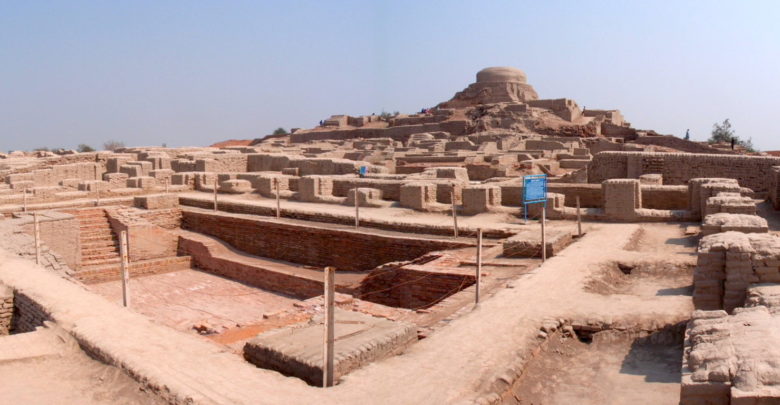Ancient Places In Pakistan


Pre Reading
1) What is history?
2) Why do we study history?
3) Can you name some historical places in Pakistan?
4) Look at the following pictures. Do you know the name of any of these
sites?
Reading Text (Excerpt)
Pakistan: Home to Ancient Civilizations
Pakistan is a land that is home to one of the greatest civilizations in the world,
the Indus Valley Civilization. However, traces of other civilizations that existed
before that can also be seen. If we take a flying trip to the ancient historical
sites across the four provinces of Pakistan we can see that, before the arrival
of Islam, followers of some of the great religions of the world lived and thrived
here. So, let’s take a two-day helicopter trip across Pakistan. This flying trip
will only allow us to land at a site, look at it briefly, and learn some very basic
facts about it.
Let us begin our journey from the southern part of Pakistan, from Bhambore,
an ancient city, situated on the northern bank of the Gharo creek, about 65 km
east of Karachi, in the Thatta District of Sindh. This city was built in the 1st
Century BC and was slowly abandoned after the 13th Century, due to the
change in the direction of the river Indus.
The Bhambhore site shows three periods. The main buildings that have been
found from the three periods are palace-type stone buildings, with a semi-
the circular shape, from the earliest age; a Shiva temple from the Hindu period;
and a mosque, with 727 AD written on it. This is, probably, the best preserved
earliest mosques in the region.
Sample Reading Passage
Ancient India
Did you know that India was one of the first places where human civilization started? The earliest human remains found date back to an astounding 75,000 years ago and were thought to live a nomadic hunter or gatherer life. They had tools and by 5000 BC they had figured out agricultural, or farming, methods. They were located around the Indus River, and as farming developed, villages did too and those led to cities being founded. This created one of the earliest civilizations of humanity, and is referred to by many names, such as Indus Valley, Ancient India, or more accurately the Harappan Civilization.
Ancient India is known as the Harappan Civilization because records show one of the city’s names was Harappa. It was 1 of 1500 cities in the Indus River Valley, another well-known city being Mohenjo-Daro, located towards the southwest of Harappa. This civilization is, according to historians, the largest of the four major early civilizations, the other ones being Egypt, China, and Iraq. It wasn’t until 1920 that the civilization was discovered at all, and historians are still struggling with translating the Indus Script, making much of the time unknown and mysterious.
There are four known major cities, Harappa, Mohenjo-Daro, Mehrgarh, and Lothal. These cities each could hold up to 80,000 people, making them far and away the largest cities. Much of the cities were made from clay bricks made by a furnace known as a kiln. The cities were advanced for their time, having their wells and water drainage systems as well as grid-style roads in the cities. Homes had their water train system as well, but most people did not live in the urban areas and instead lived in the local farming villages.
Though little is known about the Indus Valley people, we do know a little about their farming habits. They had domesticated peas, wheat, melons, dates, sesame seeds, as well as cotton. They had advanced knowledge of the process of drying wheat in buildings, and a granary was discovered, a building whose sole purpose is to hold and dry large amounts of wheat, was discovered that was nearly 200 feet long.
Though the Harappan Civilization showed similarities to others at the time, there were major differences. They created very few large structures, one of the largest being a public pool known as the Great Bath that was 40 feet long, 10 feet deep, and 20 feet wide. No temples or palaces have been discovered, so it is unknown whether they had kings or religious leaders. The way society was structured is also not well known, though there is evidence to support they were an egalitarian society or a society where everyone was equal. There also isn’t much evidence for military or astrological research or development, though the texts may have been lost to time.
There is evidence for some sort of religion existing. Many historians believe that the Indus River Valley people worshipped a Mother Goddess or a female god. The Great Bath is also thought to have been a place where people were baptized. There is also evidence to the Lotus position, a Yoga position used for meditation, was created around this time.
The civilization started to decline by 1500 BC. It was a sudden end to the civilizations, and no one is certain as to why it failed. Some theories are that earthquakes rocked the cities, changing the flow of the local rivers and making them relocate. Another popular theory is that it was destroyed by other invading nations. The only thing that is known for certain is that when the people left, a new set of people moved into their ruins.
